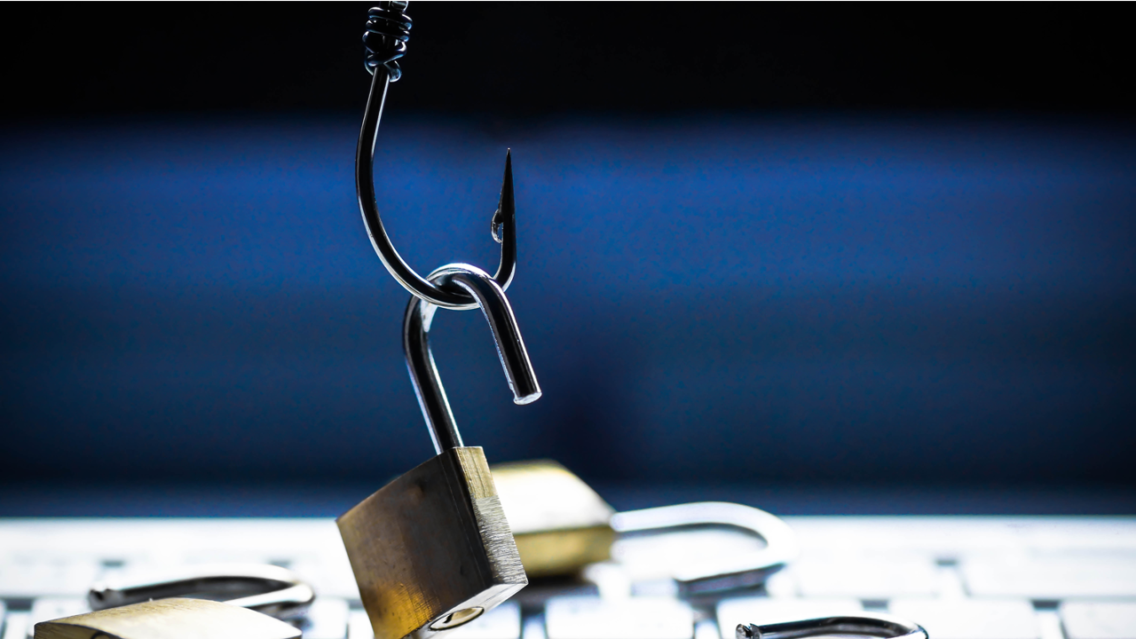As more organizations experience cybersecurity attacks, it’s become increasingly important to understand the various types of cyberattacks and ways to prevent them from happening in your organization. One of the most common types of attacks is phishing. So what is phishing, and how can you protect your organization?
Phishing is a type of social engineering attack that aims to gather sensitive information by using deceptive emails. Criminals send out crafted emails pretending to be someone else in order to trick the recipient. In this case, the criminal wants the recipient to engage with the email by clicking a link, logging into a website, or downloading malware onto their computer. The message appears as if it was sent by a trusted sender, often fooling the recipient into taking action. The attacks can happen to anyone, at any time. Even Shark Tank star, Barbara Corcoran, fell victim to a phishing attack that almost cost her $400,000.
An important part of preventing phishing attacks within your organization is understanding the different types of attacks and who they target.
Email Phishing
Email phishing is the most common type of phishing where criminals send general, mass emails to victims. In this case, the attacker will register a fake domain that is similar to the targeted organization and send out thousands of generic requests.
Spear Phishing
There are two types of phishing attacks that are extremely targeted. First, spear phishing is a type of attack that targets high-value individuals through email by using information about the victim like their name, job title, and specific information about their role. Sometimes, attackers find it more lucrative to specifically target a small group of individuals or businesses, as opposed to sending a mass email to thousands. This type tends to be more successful since the messages are carefully crafted by the attacker to reference specific details or current events that could easily deceive the recipient.
Whale Phishing or Whaling
This second type, whaling, is directly targeting the top executives within an organization. These executives have more valuable information that a regular employee would not be able to offer. Attackers target executives in the hopes of stealing private data, employee information, and cash.
Vishing & Smishing
Lastly, less common forms of phishing involve calling or texting an individual. Vishing occurs when criminals try to scam an individual by having a conversation over the phone. Smishing occurs when the attacker sends out fraudulent text messages containing a malicious link.
As these different types of attacks become more sophisticated, they become harder and harder to detect. To better protect your organization from phishing attacks, your organization can implement security tools like a spam filter, web filter and antivirus software to help prevent cybersecurity attacks. However, since employees are the biggest threat to data security, user training plays a vital role in protecting your business against phishing. Your employees are your front line of defense, so they should be routinely educated on the different types of attacks and best practices to respond appropriately. Lastly, your organization can implement a multi-factor authentication tool to help prevent these types of attacks from occurring. This tools act as an added layer of security when logging into business-critical systems.
With the rise in cybersecurity threats like phishing, organizations need to have a plan in place to help prevent attacks from having an impact on your business. Aside from implementing advanced security tools, organizations should educate their employees on what phishing is and the different types of attacks.
Can your employees detect a phishing attempt? Let our team of cybersecurity experts help educate your organization on the latest techniques. Start protecting your organization.

